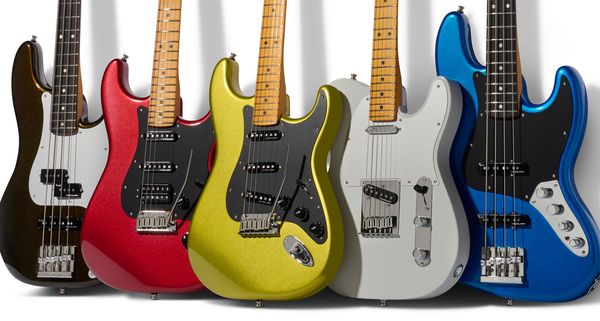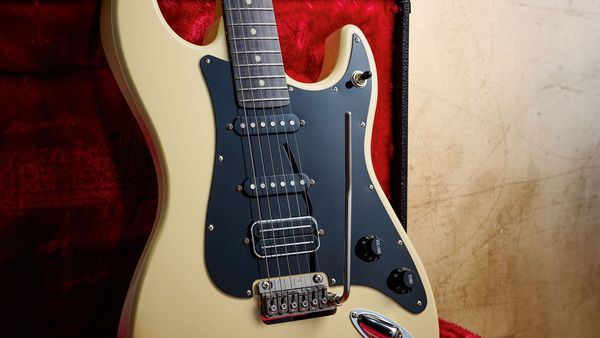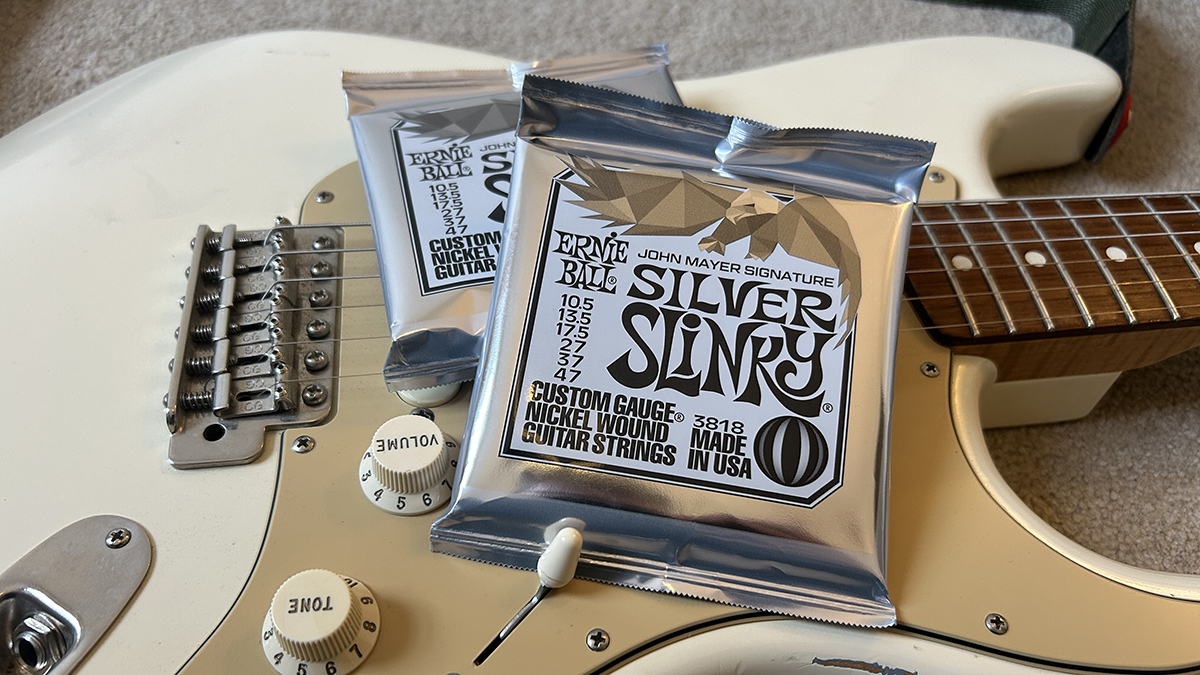
Earlier this month, John Mayer and Ernie Ball launched the Silver Slinky signature guitar strings, which brought the guitar hero’s previously unreleased custom gauge to the masses after years of development.
With an irregular gauge set of 10.5, 13.5, 17.5, 27, 37 and 47, and some special core-to-wrap ratios, developed on a string-by-string basis, the Silver Slinkys were said to be “perfectly tailored” to Mayer’s style, and allowed him to achieve “an even higher level of expression”.
For what it’s worth, I’ve never been sold by the concept of signature guitar strings, and I was skeptical at first. But I’ve been playing the Silver Slinkys for around three months now, and I think they might have actually ended my years-long search to find the ideal Stratocaster electric guitar strings. Let me explain.
When I first got my Strat I was going through a serious SRV phase, which meant I inevitably ended up falling for that old adage, “Thicker strings means thicker tone”. Fooled by this false promise, I strung up some D’Addario EXL115 11s and away I went.
As a 10s player, the jump to 11s took some getting used to. The extra heft on the top strings made bends laborious, to the point where I’d avoid bends altogether as best I could – an approach that continues to influence my style.
However, I was fond of the beefier feel of thicker bottom strings, and so for a period of two years I simply put up with them.
Eventually, I had to give in: 11s were simply too arduous for me, and (surprise surprise) they did not make my tone ‘thicker’. The switch back was underwhelming, though, and while I didn’t miss the finger-shredding top strings, I missed the girth and robustness of something a little more tangible when chording.
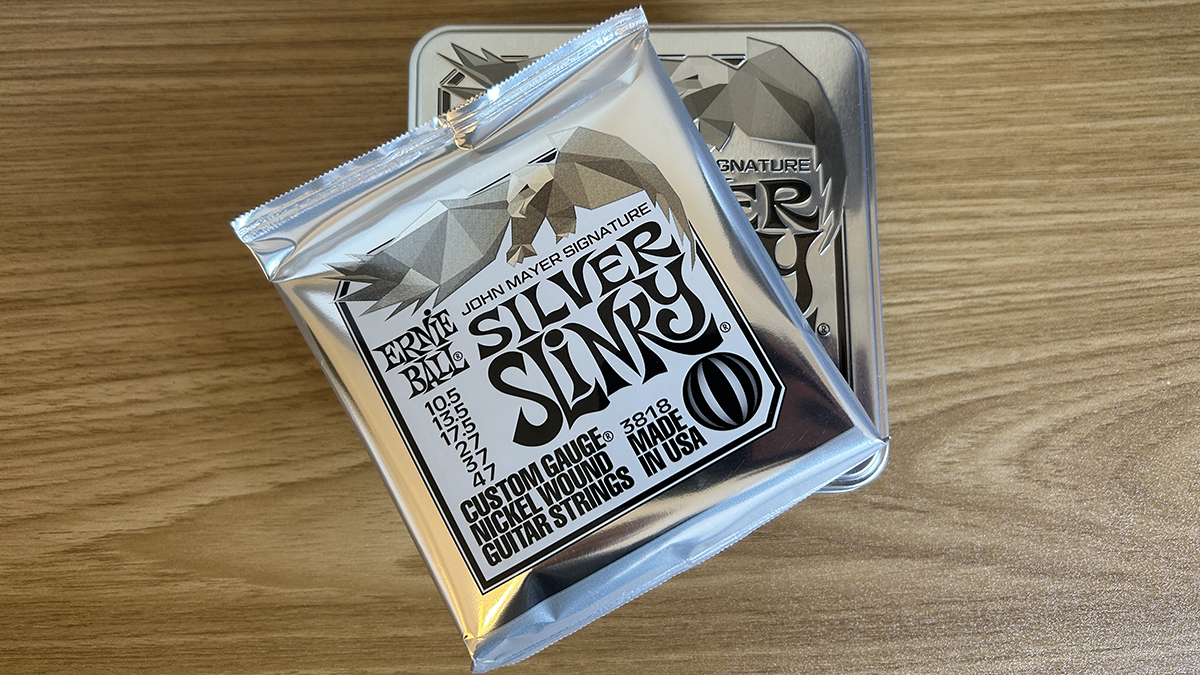
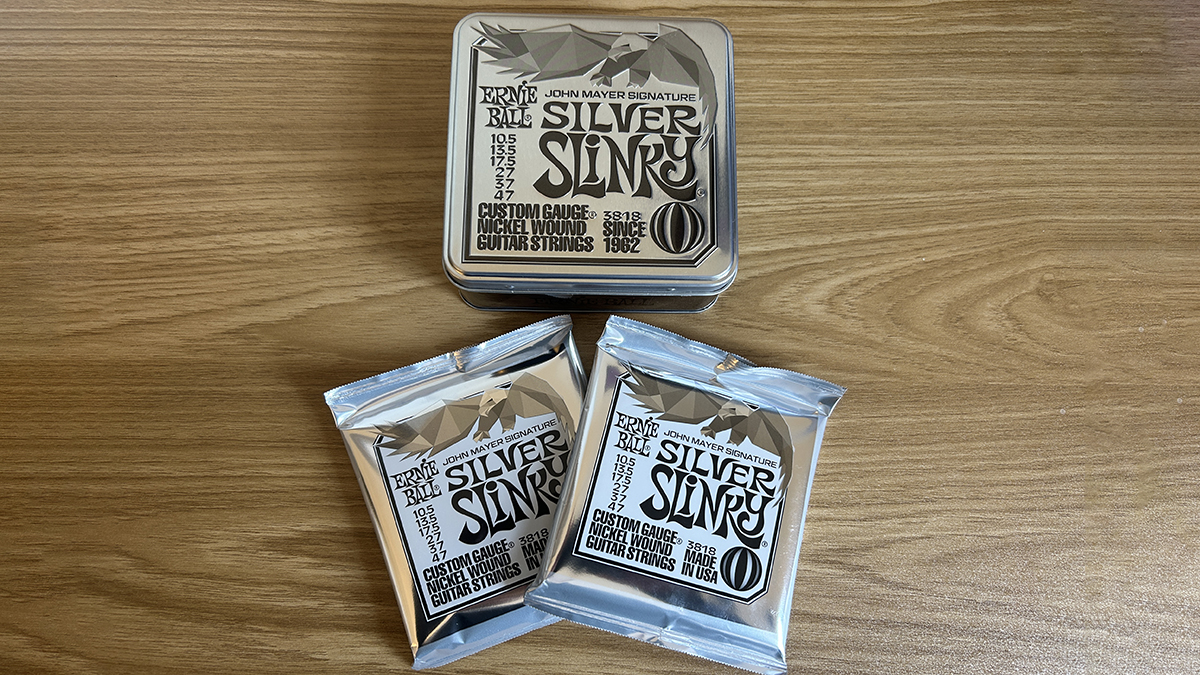
I ran into a conundrum. Do I stick with the 10s, which now felt alien on my Strat, or get on with 11s? I could think of only one solution: I bought a Telecaster and forgot all about it.
Then Ernie Ball gave us a heads-up on the Silver Slinky set. Naturally, my interests were piqued. Like countless others, Mayer is my biggest guitar inspiration. He is also an individual who clearly knows a thing or two about well-playing Strats, having loyally stuck to Strat-style guitars for most of his career, and tailored the design to his own image through his PRS Silver Sky signature guitar.
He’s also spent years developing a custom-gauge string set, which could comfortably accommodate the playing style that inspired me so much: irresistibly silky bends brimming with character, luxurious fretboard glides and a beefy punch that formed the foundation of his feel.
I was fortunate enough to be given a Silver Slinky set three months prior to last week’s launch date, and – buoyed by the hope that these could be the strings my Stratocaster has been longing for – I pulled my Strat out from hibernation, ripped off the 10s and got to work (yes, I did play Slow Dancing in a Burning Room first).
Eerily, the claims from Ernie Ball and Mayer seemed to speak directly to my own Strat problems.
“The gauges are perfectly situated between .010 and .011 sets, and feature special core-to-wrap ratios,” Mayer wrote on Instagram. “The tension is exactly where I’ve always wanted it – big enough to get great tone, but nimble enough to finesse those vocal bends we as guitar players are always going for”
Perfectly situated between 10s and 11s? Big enough for great tone? Nimble enough for vocal bends?! My prayers, it seemed, had been answered.
The top strings were only .0005 thicker, which sounds imperceptibly small, but under the fingers there’s a noticeable difference. Bends felt better and more fluid then 11s, more substantial than 10s, and now I’m no longer scared of failing to hit a note when I feel adventurous with my lead playing.
They also feel much more pleasant when I'm up there, as if they aren't trying to drag my fingers back down with barbed wire – something the gauge and carefully considered string tension both account for.
Likewise, the bottom strings are only .001 thicker than regular 10s, which retains the nice chunky feel that I especially enjoyed with my D’Addarios. They aren’t quite as heavy as conventional 11s, either – 27, 37, 47, instead of 28, 38, 49 – which means they certainly feel a bit more agile.
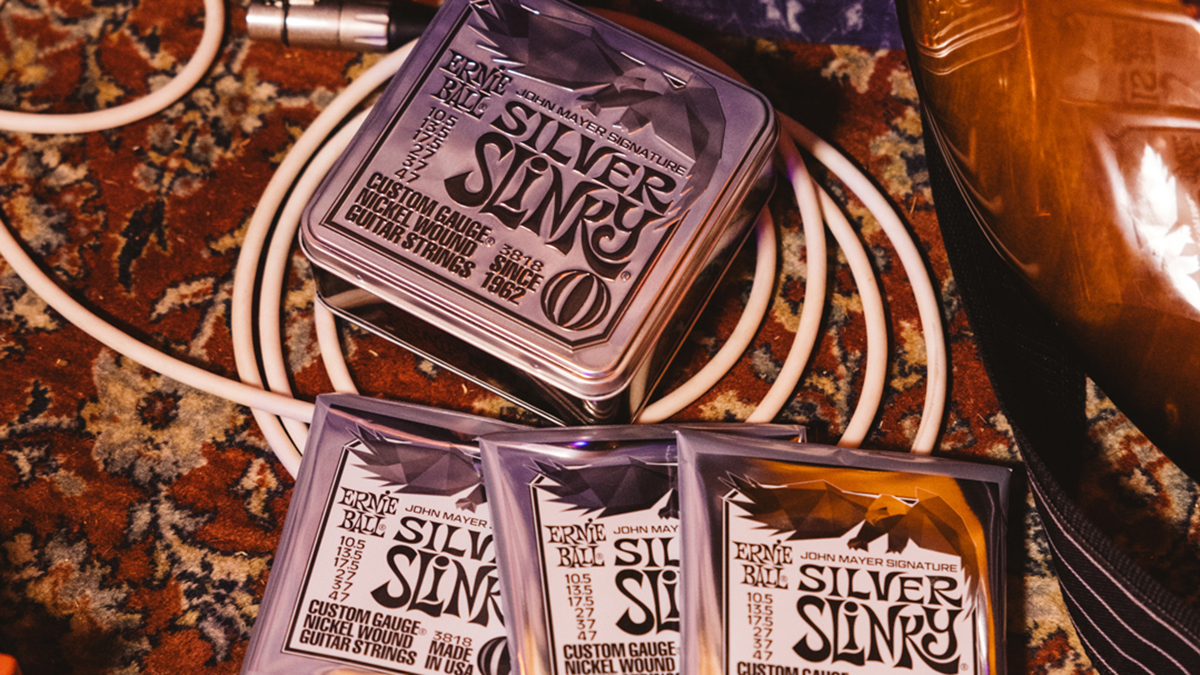
There wasn’t a disconnect between the bass and treble strings, which can sometimes be the case with bottom heavy sets. The transition between registers felt natural, and although the knee-jerk reaction was to play Mayer riffs and licks, this seemed to be a great all-rounder string set.
Then there’s the physical, tangible feel of the string. The gauges were nice, and the tension felt good, but what I didn’t expect was the slight friction that the strings offered, probably a result of the core-to-wrap ratios and Reinforced Plain String treatment.
Under the pick, it allowed for some nice ‘digging in’ dynamics, while under the fingers they felt robust and sturdy.
I felt connected to my Strat in a way I hadn’t in a long, long time
It feels very strange saying this as a signature string skeptic – and I know some will probably roll their eyes – but I felt connected to my Strat in a way I hadn’t in a long, long time.
So much so that I even began taking my Strat out for gigs again for the first time in about 18 months: I used it for a headline festival slot in the summer, and took it as my backup guitar during a sold-out Academy show in Scotland. Now, I take it on the road whenever I can.
I’m well aware that I won’t be the only player who has had to juggle between 10s and 11s on their Strat. Heck, there are bound to be loads of players out there who buy single strings to assemble their own custom set. Indeed, without the Silver Slinkys, I may have eventually gone down that route myself.
Luckily, I don’t have to, and despite being initially skeptical about the promises surrounding Mayer’s new strings, I’m pleased to report that they are absolutely a solid option for Strats, and could save a lot of Stratocaster players considerable time and money in their hunt for the ideal string set. That was certainly the case for me.
Now, I just need to decide whether to try them out on my Telecaster…
- The John Mayer Silver Slinky set is available now for $9.99. Visit Ernie Ball to find out more.







